Scottish shipyards continue to play a vital role in fulfilling Royal Navy procurement contracts, with substantial Ministry of Defence (MoD) investment supporting the sector, according to Ian Murray, Secretary of State for Scotland.
In response to a parliamentary question, Murray detailed the ongoing construction of eight Type 26 frigates at BAE Systems in Glasgow and five Type 31 frigates at Babcock in Rosyth, underscoring the long-term strategic importance of Scotland’s shipbuilding industry.
Murray explained, “My Department engages regularly with the Ministry of Defence on a range of issues. Scottish shipyards play a key role in fulfilling Royal Navy procurement contracts. The commitments set out in the National Shipbuilding Strategy have enabled MoD investment in Scotland’s yards both at Rosyth and on the Clyde.”
He also confirmed that this investment ensures Rosyth’s shipbuilding capability and capacity can support future opportunities, strengthening the UK’s industrial base.
“BAE Systems in Glasgow is constructing eight Type 26 frigates, which will form the Anti-Submarine Warfare backbone of the future Royal Navy surface fleet into the 2060s. Simultaneously, Babcock in Rosyth is building five Type 31 frigates to replace the Navy’s Type 23 general purpose frigates. This investment ensures Rosyth’s shipbuilding capability and capacity can be optimised to support further opportunities.”
Highlighting the government’s commitment to shipbuilding in Scotland, Murray added, “In late 2024, I had the pleasure of visiting both BAE Systems in Govan and Babcock’s Rosyth dockyard to witness the progress of these two key UK Government defence programmes. I also recently hosted a defence industry roundtable to discuss sector priorities and opportunities, including regional economic development and employment.”
Harland & Wolff’s future in Defence Contracts
On the future of Harland & Wolff’s Scottish sites, Kirsty McNeill, Parliamentary Under-Secretary for the Scotland Office, provided assurances that the Navantia UK buyout had secured all four shipyards, including the yards in Scotland, protecting around 1,000 jobs nationwide.
Addressing concerns about the shipbuilder’s ability to compete for future defence contracts, McNeill stated, “The UK Government acted decisively, helping to secure the commercial deal by Navantia UK. This saved all of Harland and Wolff shipyards, protecting 1,000 jobs across the country.”
She further explained, “This industry-led deal will help ensure that the MoD’s Fleet Solid Support contract is successfully delivered. Navantia UK has committed to future investment in Harland & Wolff, strengthening the UK’s industrial base and safeguarding essential sovereign shipbuilding capacity for future naval work and energy contracts.”
McNeill also confirmed that the government will continue supporting Scotland’s shipbuilding industry, stating, “The Industrial Strategy, alongside Sector Plans for the growth-driving sectors, will be published in Spring 2025, aligned with the multi-year Spending Review. The Scotland Office will continue to work with DBT and Navantia UK to support a smooth transition process and will engage with local communities where appropriate to maximise the benefits for all.”
Regarding future opportunities, she added, “Navantia UK has said that they are committed to developing the capabilities of H&W shipyards and supporting the local industry, and have already committed to investing significantly on commercial terms to ensure their future success.”


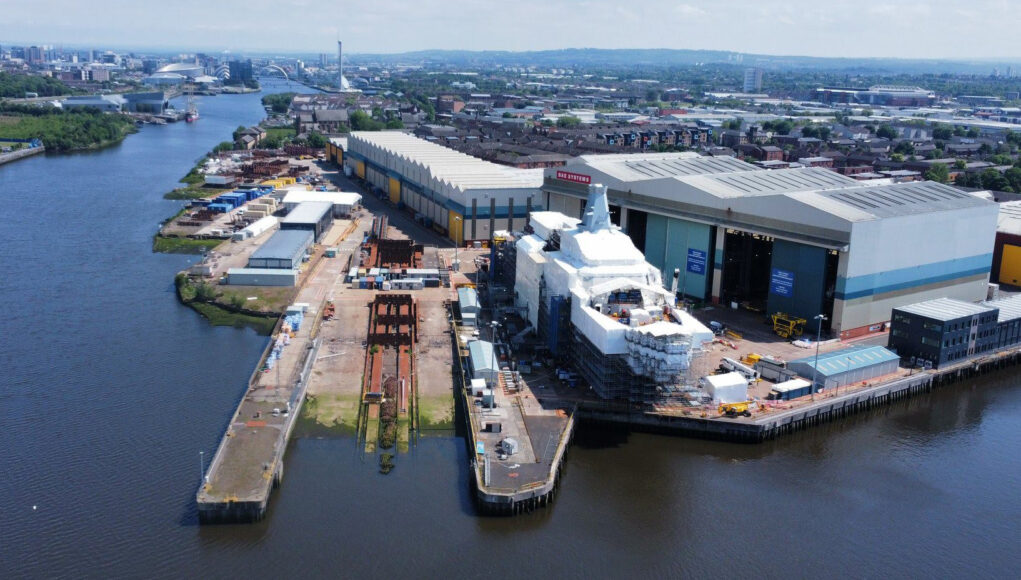
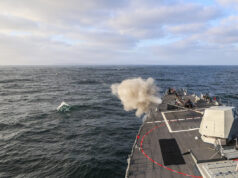
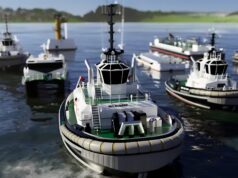
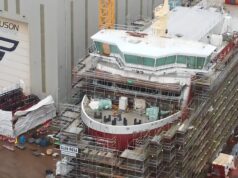
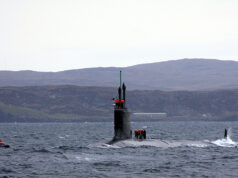
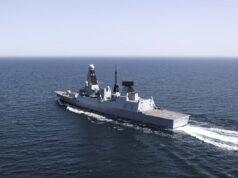

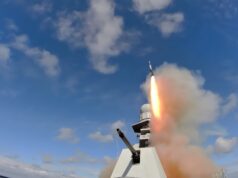
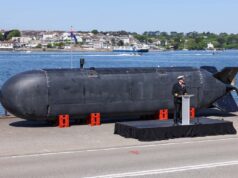
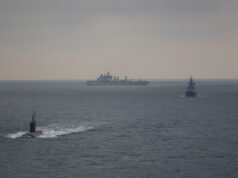
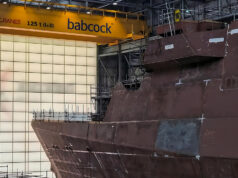

Hopefully Ian Murray can persuade Lord Robertson’s defence review that a larger navy is needed, especially since the biggest navy in NATO just decided to pack up and go home.
Agreed. With the US basically saying that they intend to as you say pack up and go home, Europe and that includes the UK need to rethink the collective defence concept.
The UK does need a larger Navy and Air force, the Army needs to be rebuilt for deployment by sea and to operate in the Scandinavian nations. With the possible withdraw of the US it will mean a major loss in Amphibious warfare capability and Strategic strike capability. Not only that but can Europe depend on the US to supply weapon systems etc.
My recommendation is to order either a batch2 of the T31 or the Babcock stretched T31 T32 design, because of cost but to increase ship numbers order a T46 say 8 ships with a limited CAPTAS 4 compact and 64 Mk41 cells based either on the T26 or T45 and 5 T83s (better 6) with 96-128 Mk41 cells. With 2 T83s and 4 T46s forming two escort groups per carrier or one escort group of 1 T83 and 2 T46s per LHD these would become the dedicated flat top escorts. This would then leave the T26s to do the job that they are designed for hunt subs. To have a T26 escorting a carrier group that makes a lot of noise means that the T26 must get out of the noise zone to do its job. This means that they cannot add to the air defence of the carrier group. Reactivate Albion and Bulwark until we can build three LHDs and possibly increase the SSNs to 9. This is my recommendation for the RN, 2 carriers, 3 LHDs, 4 T83s, 8 T46s, 8 T26s, 5 T31s, 6 T32s, 6 MRSS, 9 SSNs (possibly 12, 8 SSNs and 4 SSGNs (an SSN with 4 VPMs)). If you look at the numbers that is still only 32 surface combat ships, 5 flat tops and 2 possibly five extra subs. A possible idea with the subs if Europe must go it alone is instead of SSGNs is to take the Swedish design of the A-26 VL a range of 10,000 miles 50 days on patrol and carries 21 cruise missiles. We could get 5 of these for the cost of two SSNs. Used out of N.Norway, Baltic, Black Sea? could be an idea. Is there not a nice base at Olavsvern.
The Army would have 9 dedicated battlegroups of about 800 men each with the equipment designed for use in the Scandinavian nations with one complete battlegroup plus equipment and 10 days of war supplies per LHD. All 9 dedicated Army battlegroups could be landed in Navrik from Newcastle within 2 weeks. These battlegroups could be based around Ajax and Archer. The Royal Marines would use the MRSS (when they get built) but until then the reactivated Albions and the stretched T31(if they get built), but we do keep hearing about the T32 which Babcock based on a stretched T31. I still think the Damen Crossover Combattant is a good design. If the French would help out with their LHDs we could get a further 4 battlegroups to Norway in the same period. Thats a Light Division of 13 battlegroups landed fully equipped for ten days of operations in two weeks. The Points and Bays could land heavier equipment and supplies further South of Navrik.
The possible three armoured brigades would be sent to mainland Europe, possibly to form up with French and German armoured brigades to form a European reserve armoured division/Corp.
I do not understand enough about the RAF to think on deployment and numbers needed however I do understand that the RN needs 4 full squadrons 16 aircraft per sqn of F35Bs for the carriers if there was to be a European war; two for the strike carrier, one for training, repair and or one flight per LHD. The forth sqn would be for the carrier doing escort work. These numbers are still tight as five sqns would be better but that is a bit much.
What I do know about the RAF and for that matter the airforces of Europe is that they lack a strategic strike capability. Until now Europe depended on the US for this capability, we can no longer do that. What we need is a aircraft that can fly 2,000km at low level subsonic, pop up launch 8 cruise missiles with a range of 2,000km and bug out high level at low Mach 1.?? for 500km then carry out air-to air refueling for the rest of the return leg at high sub-sonic. If the UK, France and Germany got together I am sure they could come up with a design built around a 8 drum cruise missile launcher, limited time supersonic and low level flight for 2,000km. So I am looking at an attack profile of low low high, take of and stay low all the way to the weapon release point. The starting design could be the Vulcan bomber. It is my thinking but to go into an attack you should not carry out air to air refueling. If Germany, France and the UK had each three front line sqns of 16 aircraft each, each with 8 cruise missiles that is a combined first strike of 1,154 cruise missiles coming at the enemy; Ouch. They do not need to be superdopper stealth as they will not get to within 1,000 km of the enemy airspace. Oh further food for thought, if the US does withdraw from Europe that means that the UK has the bases to house the French and German Strategic Strike Force if need be. The reason that I have used for combat range low level is if an aircraft takes of from the UK and goes to hight it can be seen on long range radars of the Russian air defence systems. If the same aircraft takes of and stays low from take of it is more difficult. Also if the sme aircraft needs to refuel mid flight they can be seen. Bounce a signal of an atmospheric layer and get the return, used to do it all the time from Berlin to Hanover or on field ops to Maastricht 28 Br Sig Regt NORTHAG 2ATAF. When it means getting a signal from A to B and back, been there got the shirt.
I know fantisy etc yet it does look as if Europe will need to go it alone and remember or think the Russian war machine, its factories, finance and people are on a war footing, Europe is still at peace. It is starting to look like 1937 all over again where Japan and Germany had their militeries on a war footing in China and Spain whilst the rest of Europe believed in peace in our time. Germany in 1939 and Japan in 1941 had combat hardend forces, France, Britain her Commonwealth and the US had well trained forces in peace time theoretical traning, the enemy well trained forces in combat.
There is an old saying, if you want peace prepare for war.
Yes this is going to cost money, but Europe has the tech know how and the tech ability to do what is needed, they have just not invested enough over the past 30 years in defence which has come home to bite them. Now with the possible withdraw of the US from European defence Europe that includes the UK need to get their act together. However there is one issue that the US has not thought about, if they can turn their back on Europe then Europe can turn their back on the US. What happens to the five eyes, how can Britain, Canada, Aus and NZ trust a convicted felon with top secret information. How can these four nations trust the US when their Presedent wants Canada as the 51st State or for that matter take Greenland from a NATO nation Denmark. What has Denmark done to anyone? Is it time for the UK to try and form a defence agreement with the Commonwealth in the defence of Canada against American political aggression.
Fantasy
“The U.K gov acted decisively ,helping to secure the commercial deal by Navantia UK saving all Harland and Wolff shipyards”. Bollocks. It was UK govs decision not to guarantee a loan to Harlands for ships that they ordered that caused them to go bust in the first place! So now we have more foreign owners of UK infrastructure who so far have squeezed an extra £300 mill out of the UK gov before anything is built! Outstanding.